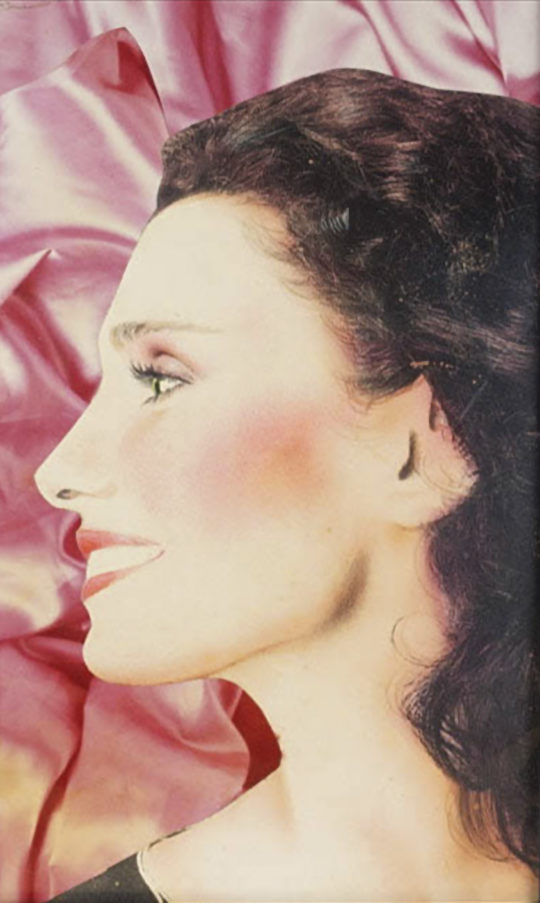
How does a nightclub, open for less than three years, become the global epicentre of music, fashion and design? In 2021, the Art Gallery of Ontario (AGO) hopes to shed some light on this question.
Before lockdown, the AGO had plans to relive the creative energy of the iconic Studio 54 with a major exhibition on the New York City nightspot. While at this time we don’t know when it will reopen its doors, for those craving a taste of the arts, here is your sneak peek.
Studio 54: Night Magic will transport visitors back to 1977 to explore the revolutionary creativity, expressive freedom and sexual liberation that transformed a New York City nightclub into a cultural phenomenon. Organized by the Brooklyn Museum, the exhibit explores a moment in time unlike any other.

Ron Galella. New York City, Studio 54, “Grease” Premiere Party, Andy Warhol with Grace Jones, 1978. Courtesy of the artist. © Ron Galell
Featuring hundreds of objects including photographs, films, sketches and designer fashions, the exhibition traces the famed nightclub’s trailblazing aesthetics while situating it within the broader social and historical context of the period. Organized chronologically, visitors will be led through the exhibition to the sounds of disco music. Curated by Matthew Yokobosky, Senior Curator of Fashion and Material Culture at the Brooklyn Museum in New York, the installation at the AGO will be overseen by Julian Cox, Deputy Director and Chief Curator.
“Born out of the social and economic tensions of New York City in the late 1970s, the club was a lightning rod for creativity,” says Cox. “On any given night, fashion designers would mix with politicians and visual artists, while celebrities performed and took to the dance floor with people from the suburbs. The impact of this creative explosion was undeniable and continues to define how we understand the visual culture of that period.”
When Studio 54 opened it doors on April 26, 1977, New York City was raw and on edge – the city was on the verge of bankruptcy and ongoing protests for civil and LGBTQ rights revealed deep divisions and painful inequalities within the population. In part, this upheaval energized the city’s creative scene while cheap studio space and apartment rentals made the city an appealing location for so many artists, musicians and designers.

Ron Galella. New York City, Premiere Party for “The Turning Point” at Studio 54, Michael Jackson and Steve Rubell, November 14, 1977. Gelatin silver print, 27.9 x 21.6 cm. Courtesy of the artist. © Ron Galella
Blueprints, sketches and architectural models trace the hurried transformation of what was an abandoned CBS TV studio. Visitors will be introduced to the nightclub’s many in-house designers and artists including: Richard Bernstein, fashion designer and illustrator Antonio Lopez, set-designer Richie Williamson, Tony Award-winning lighting designers Jules Fisher and Paul Marantz and Academy Award-winning set designer Tony WaltonSeeking to build a grand nightclub empire, New Yorkers Steve Rubell and Ian Schrager purchased an old theatre in grungy midtown Manhattan. They got to work immediately, transforming the space into what would become the hub of New York City nightlife. Their innovative redesign leveraged the creativity of the artistic community around them, converting the theatre stage into a dance floor, installing a state-of the art sound system and bolstering the existing stage lights to accommodate new heights of spectacle.
Rubell and Schrager were determined that no two nights would ever be the same at Studio 54, and the set design, guests, music and themes changed daily. Fashion designers like Diane von Furstenberg, Halston, Norma Kamali and Yves Saint Laurent strove to create custom creations as glamorous and unique as each night. Studio 54: Night Magic features many conceptual sketches and handcrafted garments to provide visitors with a glimpse into the glitz and glamour on display every night the club was open.

Richard Bernstein. Margaret Trudeau, 1978. Airbrush, gouache, pencil, and collage on board, 40.6 x 25.4 cm. Courtesy of the artist’s estate. © The Estate of Richard Bernstein
Co-published by the Brooklyn Museum and Rizzoli Electa, the exhibition is accompanied by a 176 page hardcover catalogue. Edited by Matthew Yokobosky, Studio 54: Night Magic will be available in store and online at shopago.ca.On opening night, dancers from the Alvin Ailey American Dance Theatre took to the stage indoors, while crowds outside begged to be admitted. Inside, celebrities, fashion designers, artists, musicians, gay and straight New Yorkers, Blacks, Whites and Latinos, all rubbed shoulders. Andy Warhol, Bianca Jagger, Cher, Margaret Trudeau, Michael Jackson and Truman Capote were all regulars, and the media could not get enough. During this post-Watergate, pre-AIDS era, glamour danced to a disco beat, and for the 33 months it lasted, Studio 54 was the watchword for creative expression and no-holds-barred excitement.
Details will continue to emerge. At the time of writing, the AGO had not released its post-lockdown protocols, but the exhibit is indeed coming. So, if you’re ready to relive the golden age of disco and those hazy New York city nights, it’s time to dust off those platform shoes and squeeze into that jumpsuit. As always, admission to Studio 54: Night Magic and all AGO special exhibitions is free for AGO Members, AGO Annual Pass holders and visitors 25 and under.
___________
For more information on Studio 54: Night Magic and other AGO programming, visit www.ago.ca
Main photo: Miestorm Serpent, I Got the Feeling, February 23, 1978. Courtesy of the artist. © Miestorm Serpent

